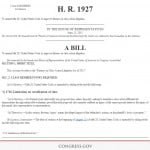August 7, 2015
Categories: Legislation

Imagine that you purchase a wonderful new product – an energy drink or a new kitchen tool, for example. You consume or use the product but all does not go well. The energy drink causes you severe stomach distress or perhaps even exacerbates an existing condition, requiring a doctor’s care. The kitchen tool malfunctions, requiring stitches or destroying your countertop. All in all, your damages don’t amount to much: a few hundred or a few thousand dollars or even less, but you’d like to be able to encourage the company that manufactured the product to either improve it or stop making it. You don’t want anyone else to suffer like you did.
Now you face a dilemma: Do you spend thousands of dollars in court costs and attorney’s fees to prove a point and recover a few hundred dollars?
Fortunately, there is sometimes another option: a class action lawsuit. If others used the same product and were similarly injured by it, you can all get together and sue for the total amount of your damages, rather than each of you trying to bring the suit individually. Class action suits are designed to promote recovery in cases where the cost of litigation is likely to outweigh the damages of a single plaintiff. It allows big corporations to be found liable for harm they’ve caused on a small or large scale (think Erin Brockovich) to large groups of plaintiffs.
Now, however, a handful of senators are trying to severely limit this protection.
On April 22, 2015, U.S. Representative Bob Goodlatte (R-Virginia) – the head of the House Judiciary Committee – introduced H.R. 1927, a bill purportedly seeking “to improve fairness in class action litigation.” Representative Goodlatte’s bill, if successful, would limit classes of plaintiffs in federal cases to those who suffered an injury (i.e., damage to body or property) “of the same type and extent as the injury of the named class representative or representatives.”
The key limitation, here, is the phrase “same type and extent.” Contrary to the bill’s purported purpose, that limitation would have a profound effect on the ability of plaintiffs to form classes large enough to create and maintain effective class action lawsuits.
To illustrate, imagine that, in the kitchen tool example above, the small appliance damaged your expensive granite countertop, while your neighbor used the same appliance and damaged her pressboard and plastic countertop. Even though you both used the same appliance and both damaged your countertops, because the extent of your damages is vastly different in value, the limitation proposed by H.R. 1927 would require you each to be in a different “class” of plaintiffs.
Again, to use the energy drink example, if your use of the drink only resulted in severe abdominal cramps and a few days of lost work, but your brother was bedridden because the drink caused a flare-up of his existing medical condition, you would be separated into two different classes because your injuries were not the same “type.”
This bill, of course, is fair only for corporations who dislike being sued. The more that corporations can limit the size of plaintiff classes, the less likely it becomes that any class will be large enough to challenge them in court. The smaller the classes, the smaller the potential settlement, and the smaller the odds that the settlement will cover the legal fees required to bring suit. Soon, defective products will go unchallenged because no group is large enough to force change.
At Wagner, McLaughlin & Whittemore, we strongly oppose any legislation that seeks to limit the rights of our clients. If you have been injured, contact us today for a free consultation.